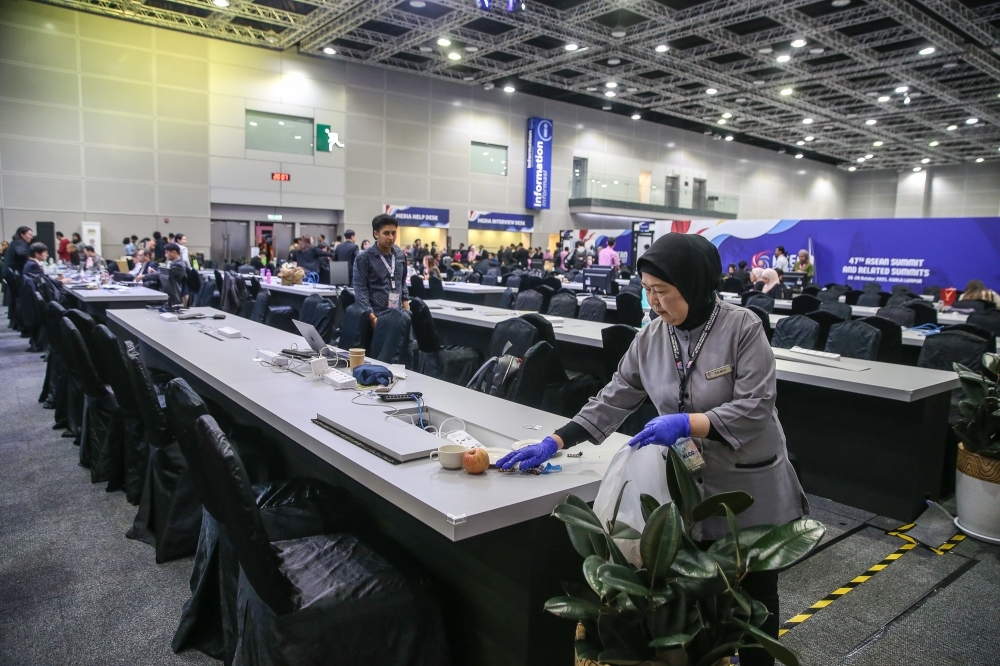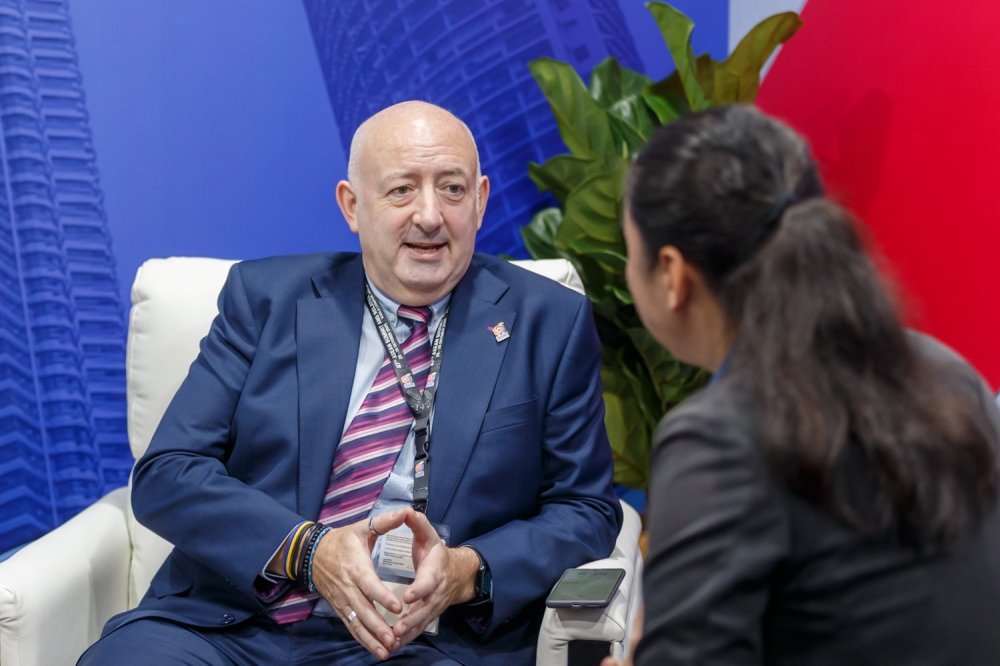
Behind the shine: The janitors who kept the Asean Summit smelling clean and running smoothly

By Kenneth Tee
KUALA LUMPUR, Oct 30 — As world leaders exchange handshakes and sign deals in the Kuala Lumpur Convention Centre (KLCC) this week, a small uncelebrated workforce has been deployed to ensure their headline-making activities proceed smoothly.
A team of 130-odd janitors dressed in grey uniforms move quietly to ensure the space used by delegates for the 47th Asean Summit and Related Summits, hosted by Malaysia, remain impeccably clean.
In just three days, the convention centre’s waste management team collected roughly eight tonnes of food waste and another one and a half tonnes of general waste — a scale that KLCC general manager John Burke said highlights the enormity of the cleaning crew’s task.
Asked about the amount of waste produced daily throughout the summit, he told Malay Mail: “Too much”.
He explained that for food waste, KLCC has a system in place to ensure that “100 per cent” is composted naturally so that none of it has to enter landfills.
“As for our general waste, we try to minimise what goes to the landfill, so about 60 per cent of the total waste collected is converted into recyclables,” he said.

Behind the scenes
In the daytime, Malay Mail observed KLCC’s janitors collect the trash and clean the washrooms regularly during their 12-hour shifts.
When night fell and the convention centre emptied, the crew began a thorough deep cleaning of the vast premises covering function rooms, restrooms, and foyers.
They vacuumed and mopped the floors, polished every glass panel, metal handle and rail and wooden surface till it gleamed.
Inside the refuse room, janitors sort through the collected rubbish, separating general waste from recyclables. Just next door, a four-tonne roll-on roll-off bin gathers the day’s food waste as it awaits transport elsewhere for composting.

KLCC Chief Steward Parameswaran Marimuthu Pillay said the food waste bin is equipped with a biofilter designed to neutralise odours and decompose harmful gases emitted from the accumulated waste.
“We also use biochar, a sustainable, carbonised solid product, to cover the top layer inside the bin and help mitigate any escaping odours,” he told Malay Mail when met.
When it comes to food waste, KLCC Chef de Cuisine Nur Muhammad said a dedicated bin is also used to collect the day’s plate waste from buffet offerings and guest servings, complemented by an AI-driven food waste tracking system that helps the kitchen operate more efficiently.
He said the food waste tracking analytics platform – implemented over three years ago – has significantly helped drive food cost savings whilst increasing yield from food preparation.
“From here we can see what is the most favourite to the least favourite items and from there we can re-engineer, reduce our menu offerings to further reduce wastage.
“For example, as you can see yesterday’s plate waste amounts to 160 kilograms for both lunch and dinner; and from here we can see its carbon footprint value,” he told Malay Mail when met.

While the housekeeping crew worked tirelessly, Burke said getting the Summit attendees to dispose of their waste in the correct bins was a persistent challenge.
“It’s very difficult to get people to put the right type of rubbish in the colour-coded recycling bins provided so we try to do extra segregation behind the scenes later.
“It’s not specific to any event but an all-year round problem,” he said.
Still, Burke said KLCC is exploring waste segregation and handling methods that require less manpower and effort as it strives to achieve net-zero carbon emissions by 2050.
With the 47th Asean Summit now concluded, these invisible hands behind the scenes will quietly carry on, ever ready for the next big occasion.
Source: behind-the-shine-the-janitors-who-kept-the-asean-summit-smelling-clean-and-running-smoothly
0 Comments
No comments yet. Be the first to comment!
